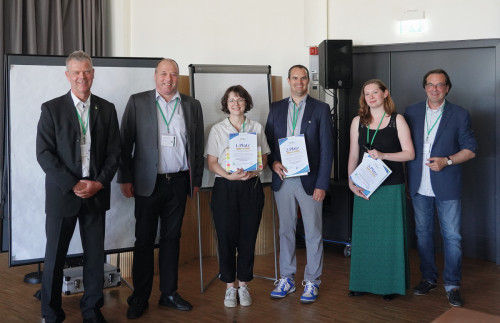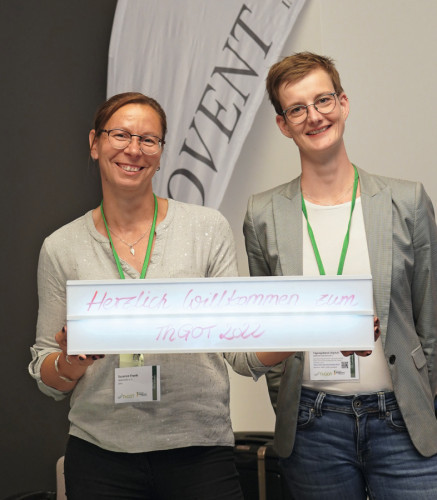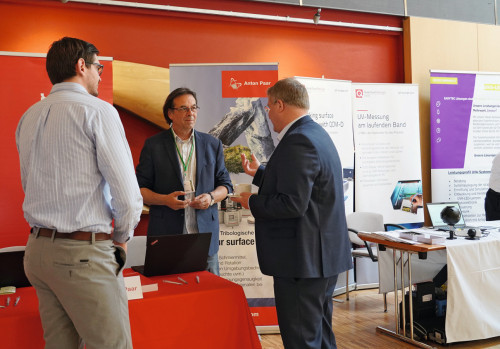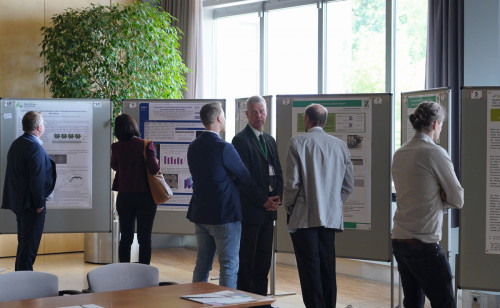With the Thematic Days for Interface and Surface Technology in Jena, ThGOT 2022 for short, an industry-relevant face-to-face conference with a scientific exchange of ideas took place in a creative atmosphere in Zeulenroda-Triebes, Thuringia.
After Corona is not the same as before Corona, the 16th Thematic Days Border and Surface Days were a meeting place for ambitious scientists, industry representatives and students from Germany and German-speaking countries in a slightly different format after a 2-year forced break. Current topics in the field of surface technology were addressed in 4 plenary and 20 short lectures. The presentations focused on antibacterial surfaces, 3D printing, washing processes, new trends and sustainable surface technology. Even the introductory lecture by Prof. Bernd Szyszka / TU Berlin on the large-area coating of architectural glass was fascinating with innovative developments in the field of sputtering technology. Ultra-smooth coatings can be produced with the tubular target used. Serial co-sputtering with pressure separation is favored as a new basic technology. Nanocrystalline layer growth can be used to deposit ITO-HIPIMS layers that are harder than glass. This technology has currently been realized for a 750 mm cathode; for industrial applications, the treatment width still needs to be significantly extended.
In another keynote speech, Prof. Mario Beyer from the Institute of Wood Technology Dresden gave an overview of current developments in the surface treatment of wood and wood-based materials with a focus on protection, functionalization and aesthetics. Wood as a chemical hybrid material with an anisotropic structure and varying connected vascular systems / fibers made of cellulose, resins, fats, oils and sugar places special demands on effective surface treatment. A variety of surface functionalizations were discussed in the lecture, including smoothing by pressure and temperature treatment, improvement of wettability by means of plasma activation (e.g. for fire retardants and weathering protection coatings), lye & fuming to improve light stability and wood decontamination by means of atmospheric pressure plasma. Various types of hydrophobization such as charring, chemical wood modification by impregnation with chemicals and CVD processes with silanes were also discussed.
In a session on 3D printing and surface technology, speakers from the Beckmann Institute for Technology Development Chemnitz, BMF GmbH Grüna, iba Heiligenstadt and axiss GmbH Keltern provided information on the latest key topics. Surfaces of 3D-printed components differ significantly from surfaces of compact components, depending on the 3D printing technology. Depending on the type of production, characteristic surface properties include a special surface roughness and structure. These can present problems, but also potential for new functionalities. Relevant processes can include smoothing and closing pores as well as functionalization through structuring and the introduction or application of nanoparticles. The individual layers in the printing process also represent surfaces for the subsequent printing process and can significantly influence the properties of the end product. The presentations included new materials for additive manufacturing and a process for intelligent surface inspection after additive manufacturing. Additive manufacturing offers a high degree of design freedom and also the possibility of processing natural materials made from renewable raw materials. This is ideal for applications in the packaging industry, for example.
Textile surfaces were the focus of the New Trends in Surface Technology session. The adhesive and durable coating of flexible materials with functionalizing coatings was presented by speakers from Chemnitz University of Technology, FILK Freiberg, TITV Greiz and STFI Chemnitz. The focus was on functionalizations such as organic-inorganic hybrid coatings, barrier layers to reduceCO2 permeation, conductive metallic coatings and the use of UV LED curing for textile coatings. Another new trend on the agenda was developments in the field of bright corrosion protection using wet-chemical pre-treatment from the Institute for Corrosion Protection Dresden.
 Poster award ceremony with sponsors
Poster award ceremony with sponsors
In addition to lively technical discussions and information exchange, the breaks could be used to visit the industrial exhibition. Several providers of analysis technology for surface characterization, equipment manufacturers and suppliers of specialty chemicals presented themselves here and were available to answer questions and make contacts. There was also a poster exhibition with interesting work from institutes and students. As one of the highlights of the ThGOT, poster prizes sponsored by the exhibitors were again awarded during the joint evening event. Many thanks to the sponsors Anton Paar Germany GmbH, DataPhysics Instruments GmbH and Lumentics.
Not only the exciting presentations, but above all the lively discussions have shown that there is still a lot of potential and need for new and further developments in the field of interface and surface technology. The ThGOT does not traditionally take place as a single event, but rather bundles topics from other specialist areas - in 2022 in a duo with the 13th Thuringian Biomaterials Colloquium. In line with the partner event, there was a session on antibacterial surfaces as part of the ThGOT program. In addition, a keynote lecture dealt with current trends in the application of physical plasmas for the modification of surfaces in the life science sector. The next ThGOT will take place from June 13-14, 2023 in Jena and await guests in a new format - let us surprise you! Presentations and posters can be submitted via the link https://www.thgot.de/anmeldung/ until January 31, 2023.
Photos: Innovent






